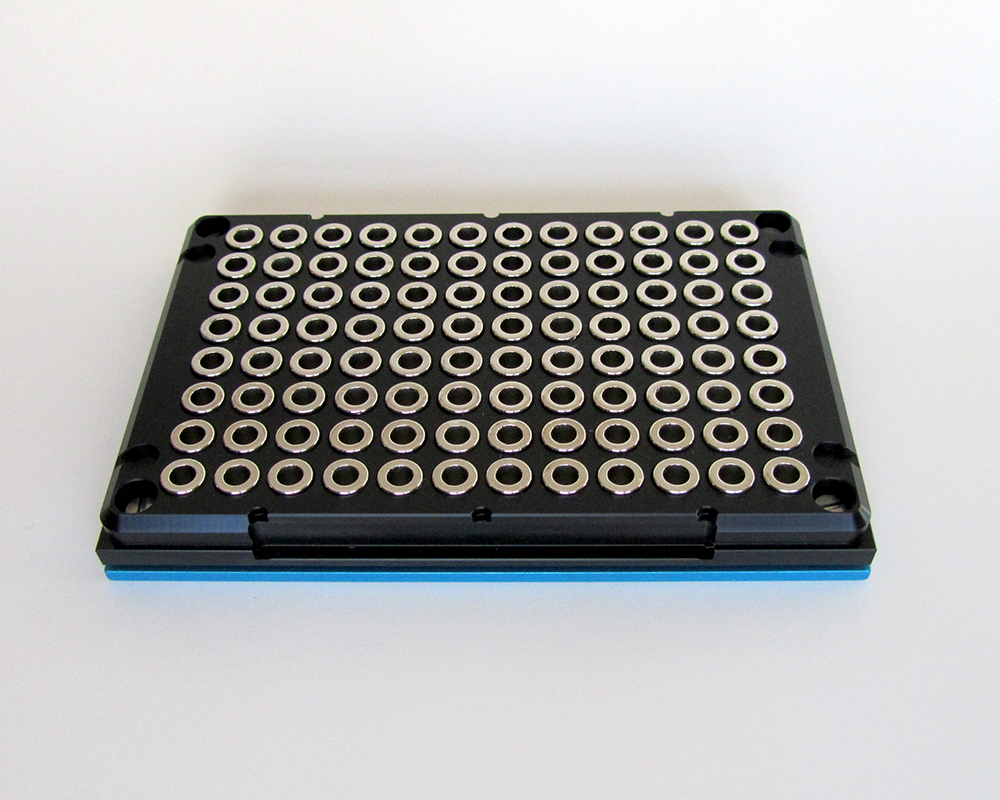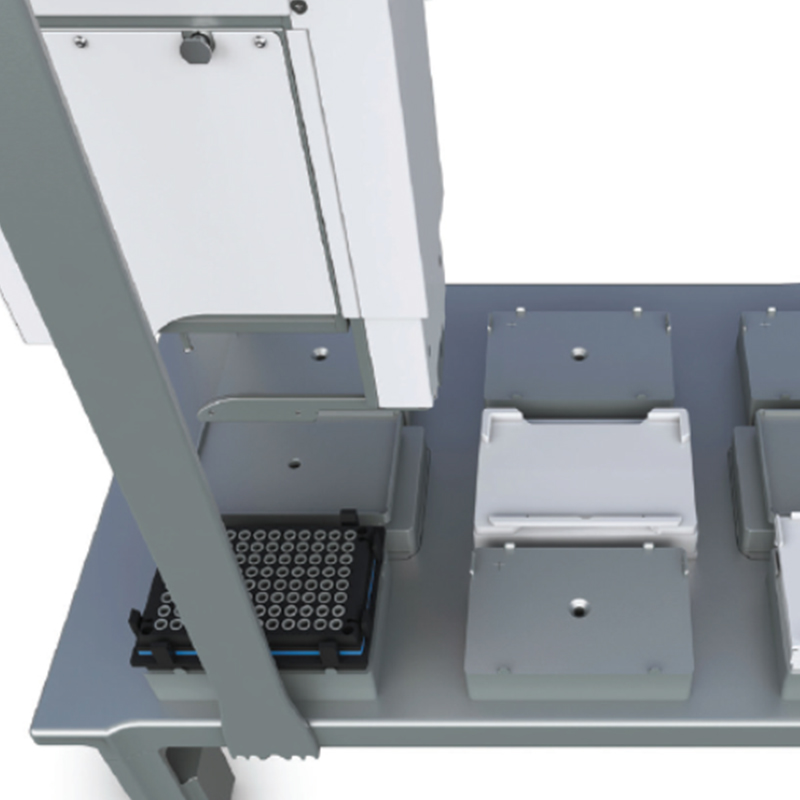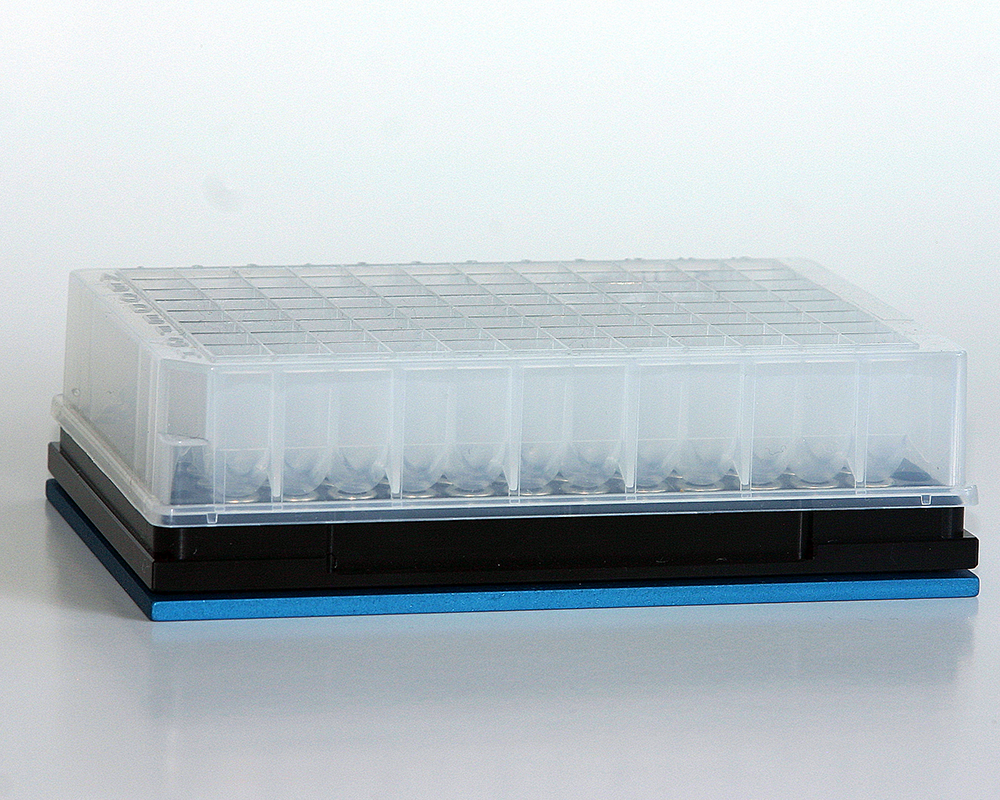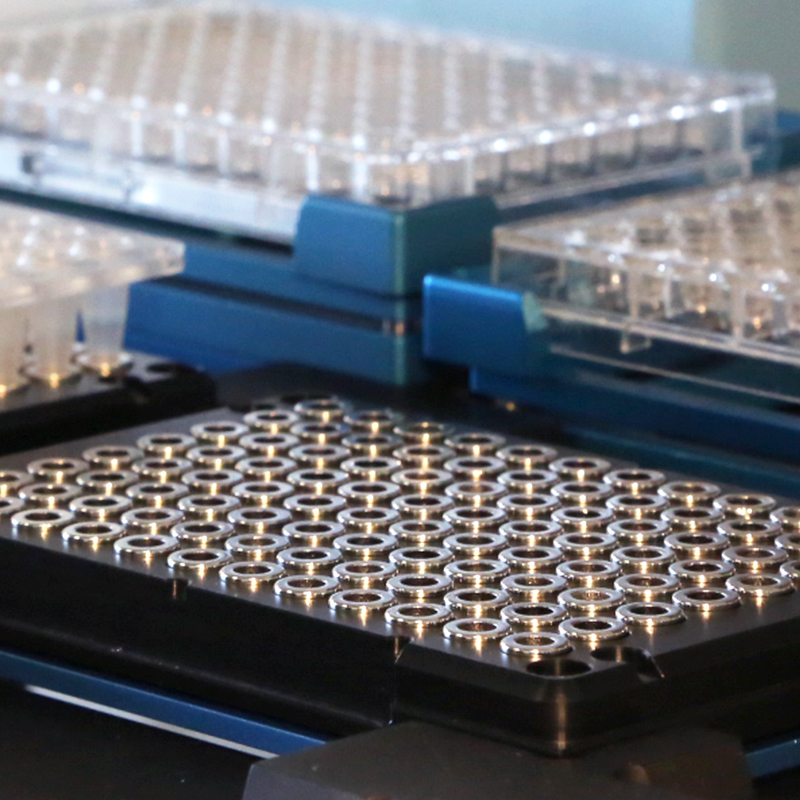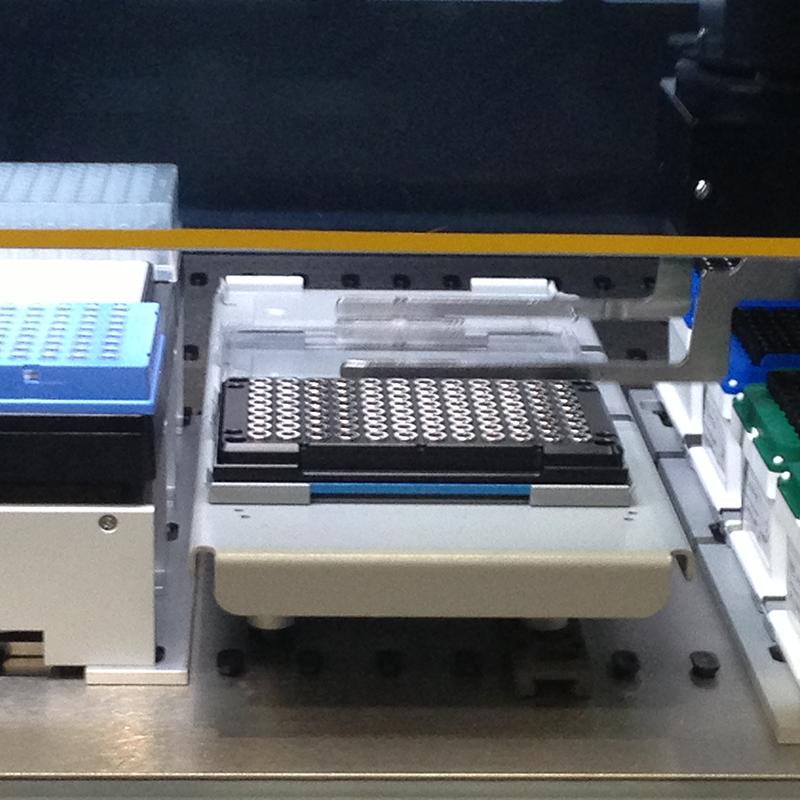96S Super Magnet
- 96 well Magnet Plate
- SKU: A001322
$880.00
Starting from 3 items: 5% off
Starting from 10 items: 10% off
96-well ring- magnet plate with integrated Spring Cushion Technology
for automated magnetic bead separations using a broad range of 96-well microplates. Identical to Beckman Coulter P/N A32782.
This is the original “SPRIPlate” designed for use with the Beckman/Agencourt SPRI® magnetic bead chemistry. A reliable workhorse, it is used in a wide variety of magnetic bead protocols and found in top genome centers and laboratories all over the world.
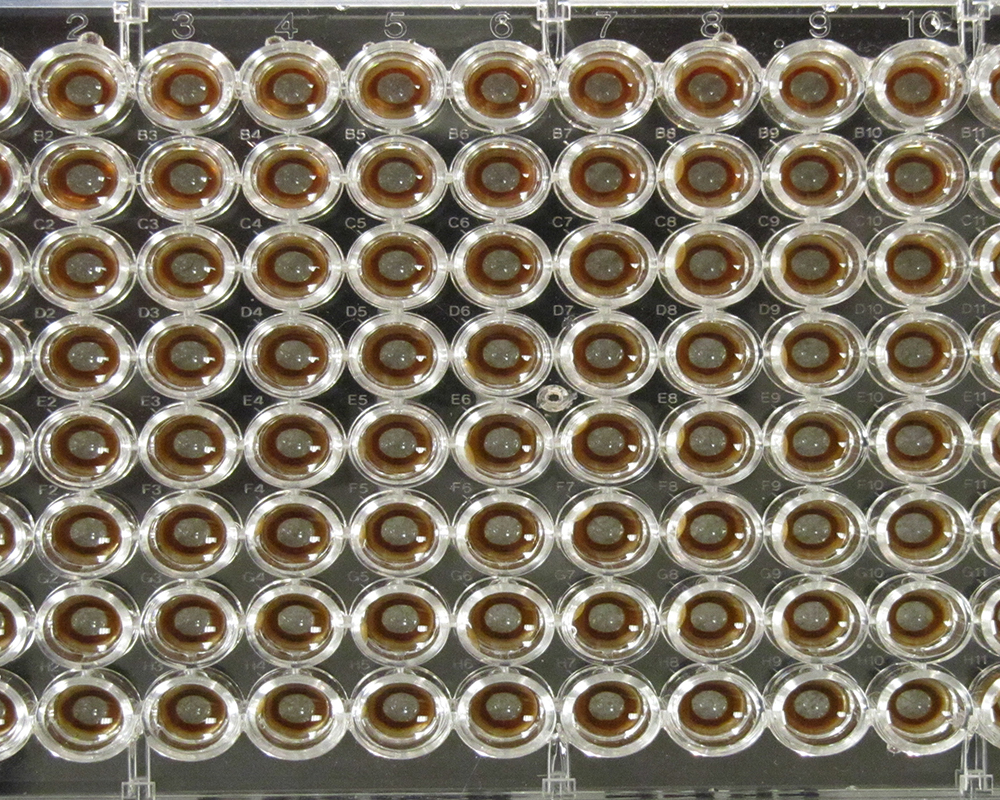
Ring-shaped magnets pull magnetic beads to the well perimeter which allows for maximum aspiration of supernatants, wash solutions, and eluates.
Ring Magnet Benefits:
- Minimizes edge effect because each well has a dedicated magnet
- Faster separations because there is more magnetic material per well
- Expansive 96 well microplate compatibility in comparison to post magnets, including with PCR plates
Automation-friendly
SBS footprint for broad compatibility, gripper grooves for easy robot access, and integrated Spring Cushion Technology
Why do I need Spring Cushion Technology?
Alpaqua magnet plates with integrated Spring Cushion Technology give way when tips come in contact with a well bottom. This compensates for physical tolerances between labware and pipettors that can compromise precision aspiration and ultimately improve pipetting.
- Minimizes tip vacuum & possible pipette head contamination
- Improves pipetting consistency and enables maximum aspiration of samples and reagents
- Maximizes usage of reagents & samples
- Protects instruments & consumables
- Accelerates automated method development
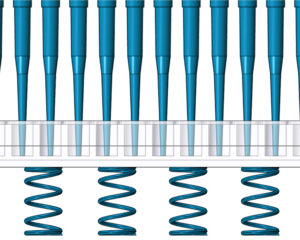
96S Super Magnet Resources
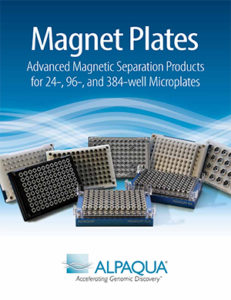
Alpaqua Magnet Plate Brochure
A000270, A000350, A000380, A000400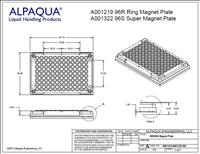
96S/96R Magnet Plate Specifications
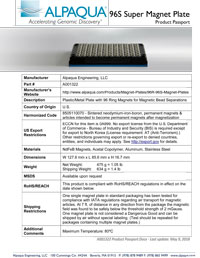
Product Passport – 96S Super Magnet Plate
96S Super Magnet FAQs
Which microplates are compatible with the 96S Super Magnet Plate?
The 96S is compatible with a variety of microplate types such as PCR plates, deep well plates, U- & V-bottom plates and most skirted, non-skirted, and semi-skirted 96-well PCR plates.
Example plates that work well include the Corning Costar 3795 (round bottom), ABgene AB-2800 SuperPlate (low profile skirted PCR plate), ABgene AB-1127 (1.2 mL square well storage), ABgene AB-0661 (2.2 mL round bottom storage) and the Ritter riplate (2 mL round bottom storage).
There are many more plates that are fully compatible with the 96S. If you are unsure of your microplate compatibility, contact Alpaqua scientists or submit a sample to Alpaqua for testing.
Why does Alpaqua recommend rigid PCR plates?
Alpaqua generally recommends rigid PCR plates, like the Bio-Rad Hard-Shell, Eppendorf twin.tec, or 4titude FrameStar plates. The reason is that single-component polypropylene plates can sometimes be warped, especially after thermocycling. A warped plate can be difficult for a robot gripper to properly place on the magnet.
If the work is done by hand, then this is not an issue; the user can press the plate down on the magnet manually to ensure proper seating. Also, some plates are better than others, so it is absolutely possible that a non-rigid plate may work just fine, even on a robot. But for an automated workflow, rigid plates are a safer, more reliable choice.
Are there any 96-well microplates that you know are incompatible?
The full-skirted Eppendorf® twin.tec 96 well PCR plate is not compatible because the wells do not reach far enough into the magnet ring. The semi-skirted and non-skirted versions of this plate are fine.
The 96S is generally not recommended for use with flat bottom plates.

